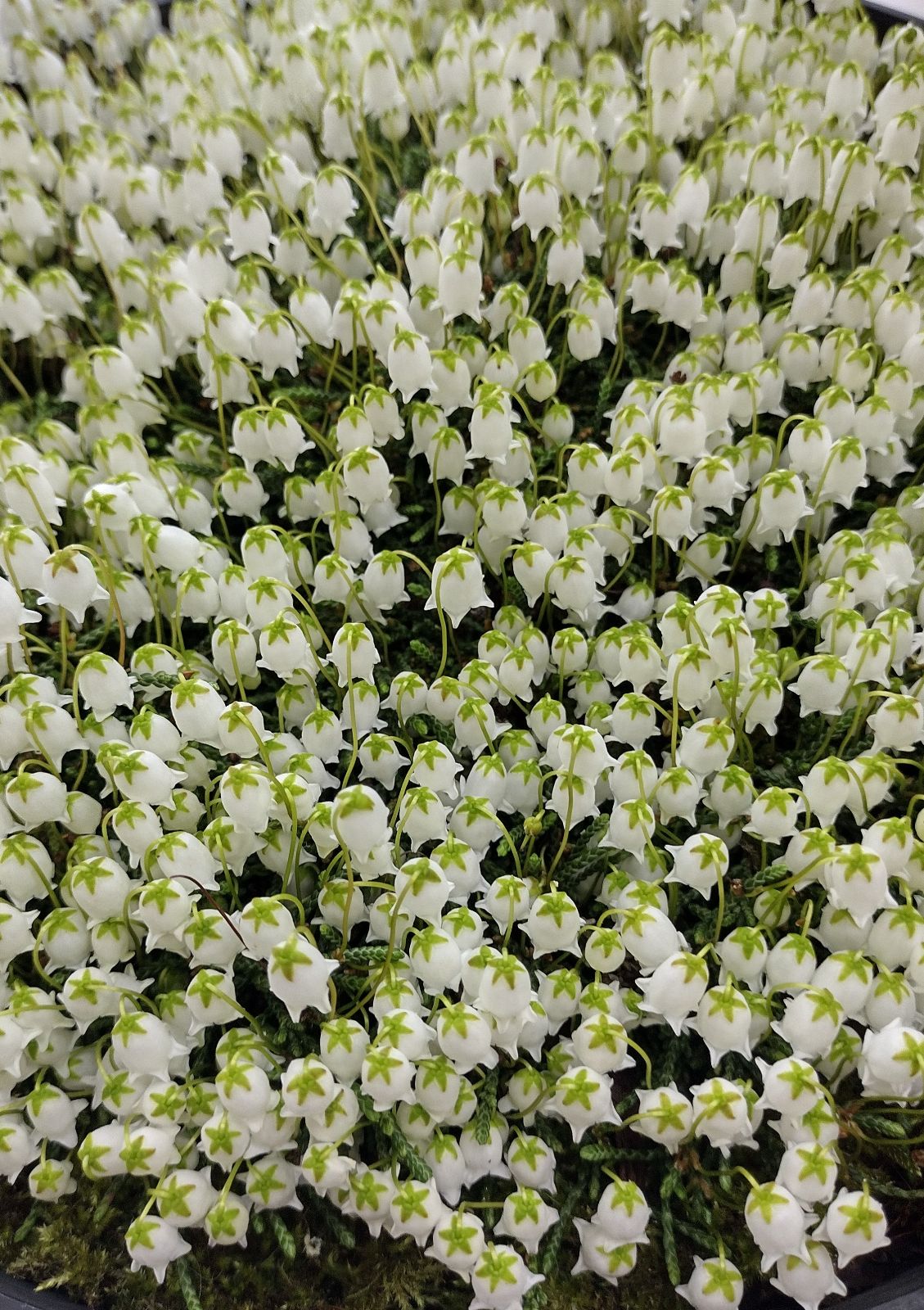Cassiope lycopodioides
Credits
Article from Bean's Trees and Shrubs Hardy in the British Isles
Recommended citation
'Cassiope lycopodioides' from the website Trees and Shrubs Online (treesandshrubsonline.
Genus
Synonyms
- Andromeda lycopodioides Pall.
A prostrate evergreen shrub 1 to 3 in. high but 1 to 3 ft wide; shoots dense, slender, closely covered with tiny appressed ovate, glabrous leaves, and altogether (leaves with stem) only about 1⁄12 in. wide. The leaves resemble those of C. mertensiana in having no groove down the back and thereby differ from those of C. selaginoides. Flowers pendent, solitary, axillary, white, bell-shaped and lily-of-valley-like, 1⁄4 in. long, the stalks thread-like, 1⁄2 to 1 in. long; opening in May and June, with sometimes a supplementary crop in autumn; stamens ten. Bot. Mag., n.s., t. 298.
Native of high altitudes in Japan and thence northward to Alaska. A very beautiful little shrub, rare in cultivation, but occasionally offered by nurserymen. It likes cool, moist conditions, a peaty soil and shade during the middle of the day.
From the Supplement (Vol. V)
Another probable hybrid of this species, probably with C. fastigiata, is ‘Medusa’, which arose as a self-sown seedling in the garden of the late E. B. Anderson at Porlock in Somerset (Bull. A.G.S., Vol. 41, pp. 141 (illustr.) and 147 (1973)).

